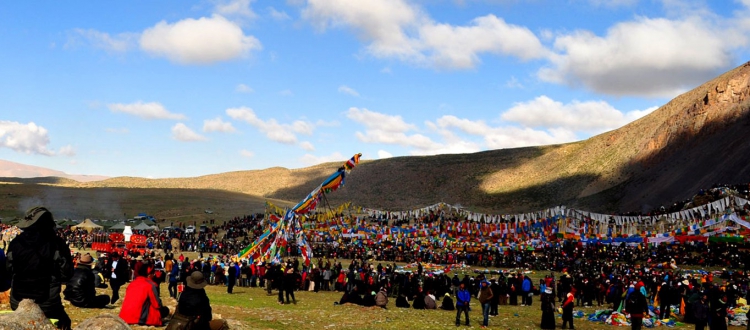About Prayer flags

A prayer flag is a colorful rectangular cloth, often found strung along mountain ridges and peaks high in the Himalayas. They are used to bless the surrounding countryside and for other purposes. Prayer flags are believed to have originated with Bon, which predated Buddhism in Tibet. In Bon, shamanistic Bonpo used primary-colored plain flags in healing ceremonies in Nepal. They are unknown in other branches of Buddhism. Traditional prayer flags include woodblock-printed text and images.





















